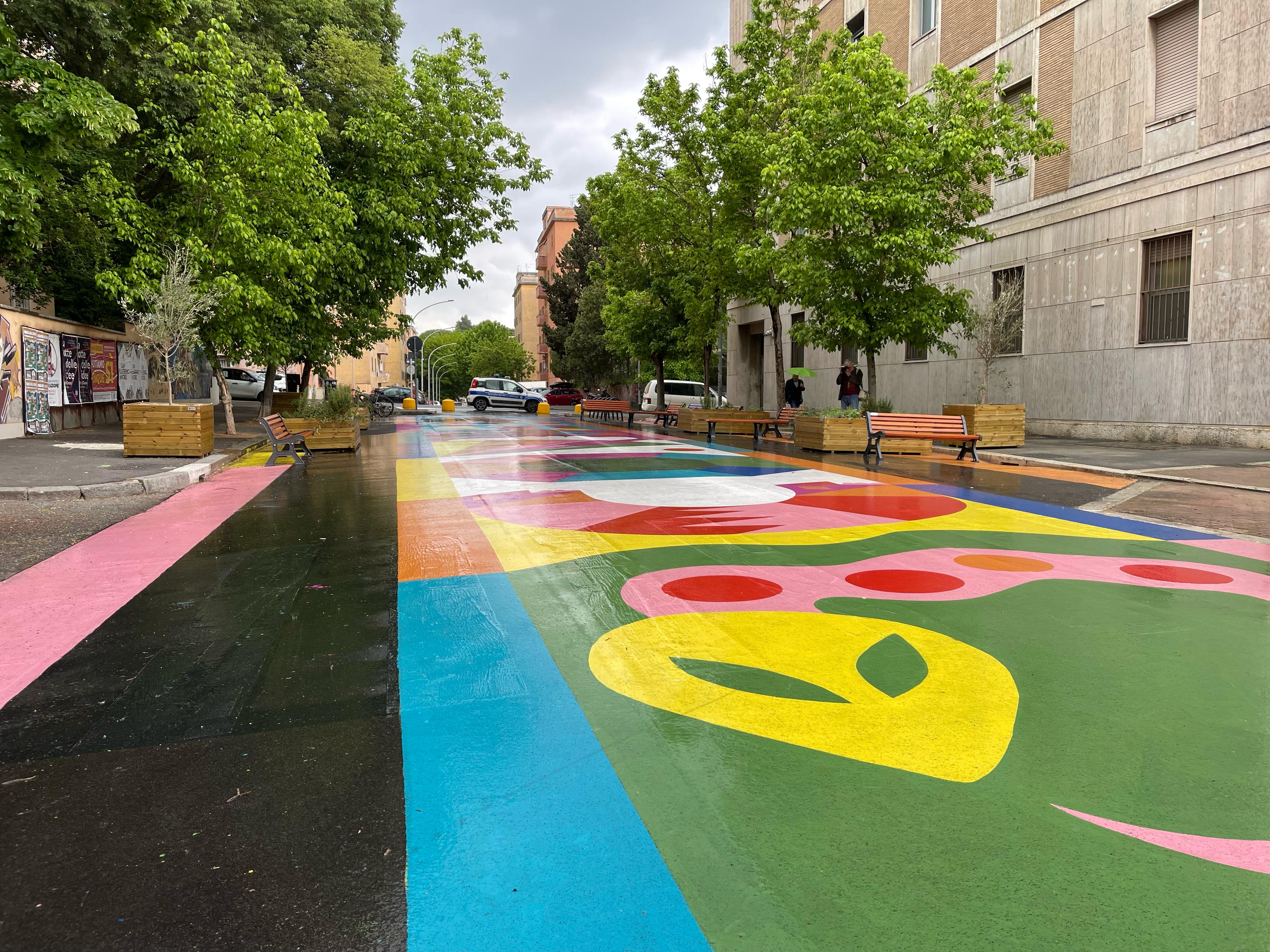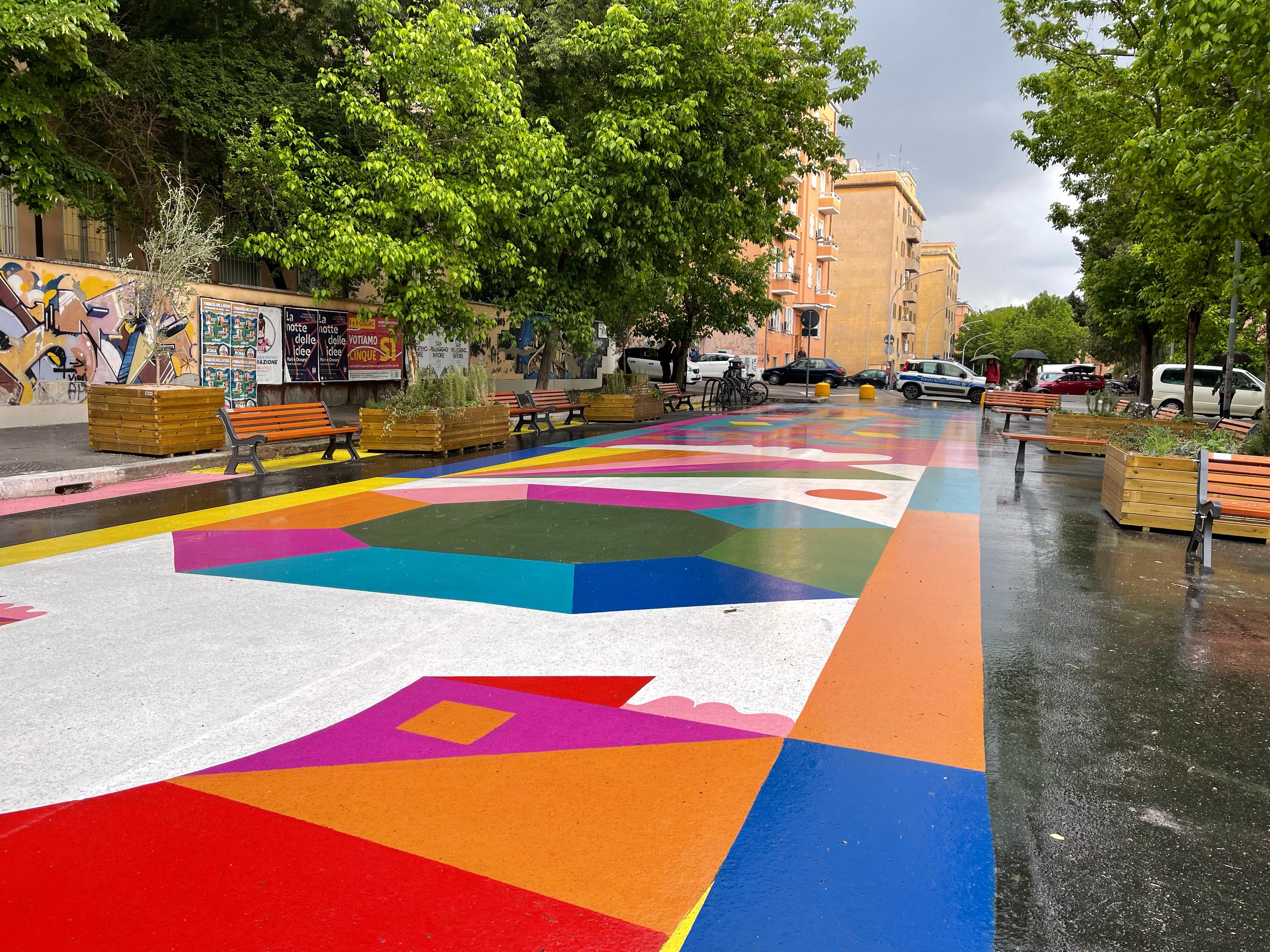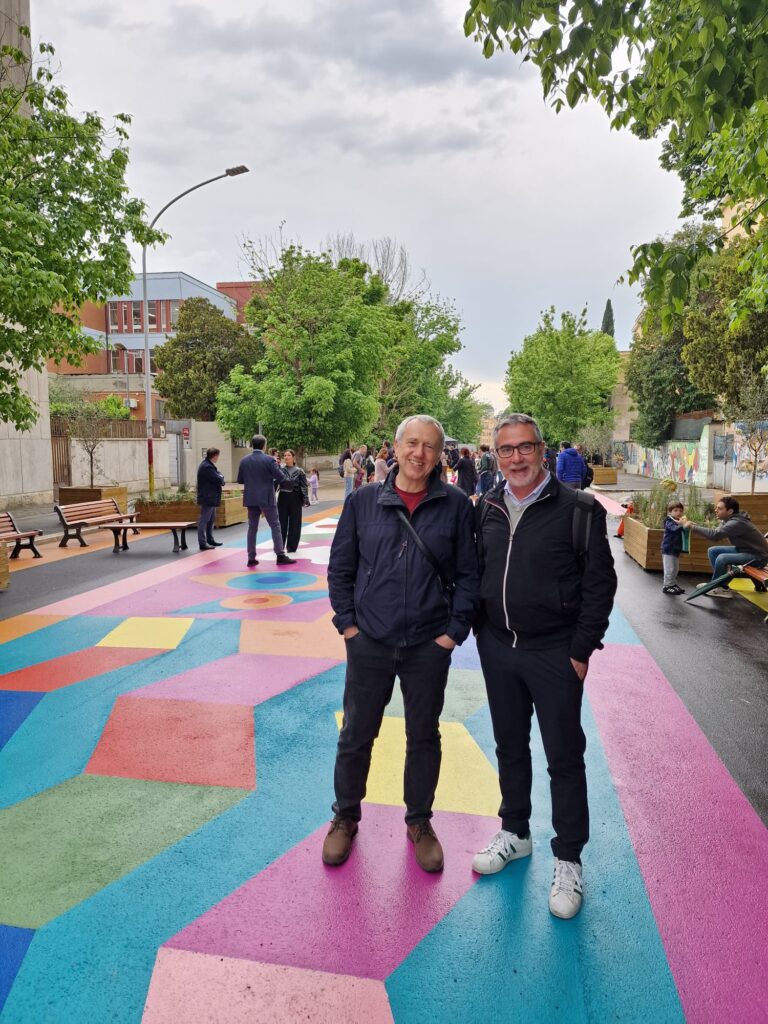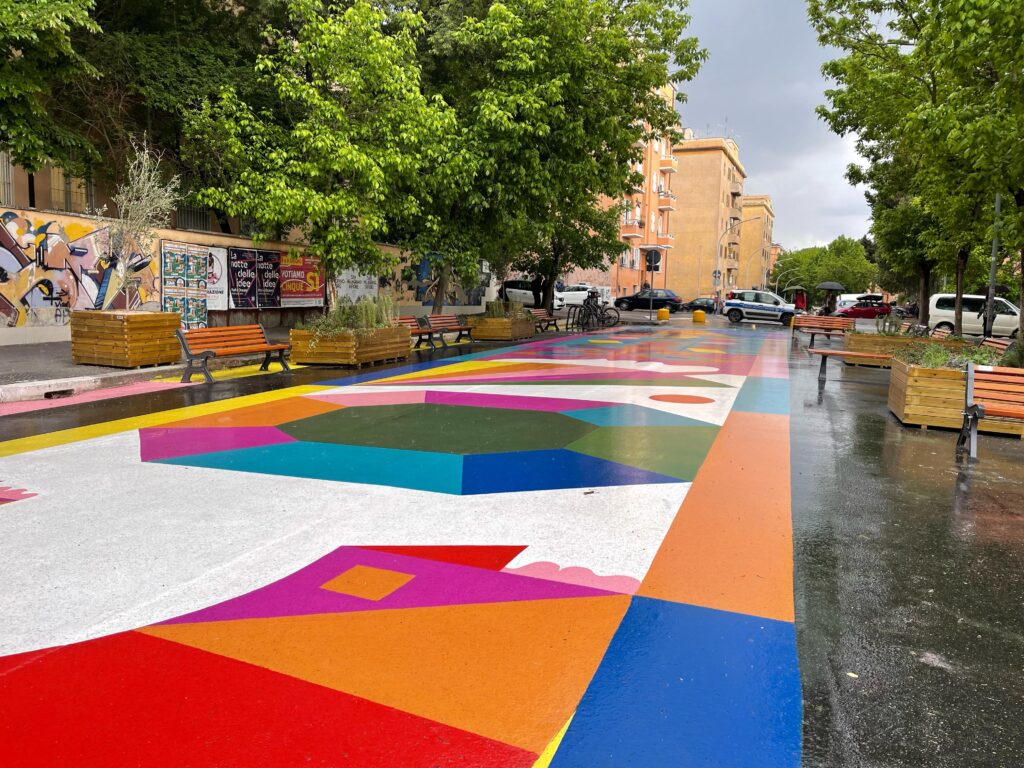The ‘Flying carpet’ landed in Rome
Monte Ruggero's #SchoolStreet: Rome’s First Tactical Urbanism Initiative
Via Monte Ruggero’s School street, part of the Eternal City's mobility efforts in UPPER, stands as Rome’s pioneering example of tactical urbanism—an innovative approach that employs light, creative, and cost-effective interventions to transform public spaces. This strategy actively involves citizens in shaping their environment, making urban areas more inclusive, safe, and vibrant.
 @fotocredit RSM
@fotocredit RSM
Even under the rain that soaked the inauguration yesterday afternoon, the "flying carpet," created by street artist Gio Pistone, was revealed in all its colorful cheerfulness.
The street in the III Municipality, which features the entrances to primary schools, high schools, and sports and cultural facilities (including Aristofane, Donato Bramate, Montessori, the "Ennio Flaiano" municipal library, and the Libera-Mente Theater), was closed to traffic and made pedestrian-only, then decorated with benches, flower boxes, and bicycle racks. This was done to make the street exclusively accessible to pedestrians, ensuring safety.
 @ex ante
@ex ante
 @ex post
@ex post
The initiative was spearheaded by Rome’s Department of Sustainable Mobility and Transport as part of the Asphalt Art Call, a project funded by Bloomberg Philanthropies. The goal was to create compelling graphic artwork on a designated city street—specifically, Via Monte Ruggero in the Tufello neighborhood of Municipality III.
Renowned artist Gio Pistone was commissioned to design the artwork. He proposed three variations of a flying carpet motif, which were then presented to residents for feedback through an online survey conducted in March 2025. This participatory process ensured community engagement and buy-in.
The section of Monte Ruggero hosting two primary schools, three high schools, and various sports and cultural facilities was temporarily closed to vehicular traffic, transforming it into a pedestrian-only zone. Following the completion of the graphic artwork, additional street furniture—including benches, flower planters, and bike racks—was installed to enhance the space’s usability and aesthetic appeal. This project exemplifies how tactical urbanism can revitalize urban environments through community-centered, low-cost interventions, fostering safer, more inclusive neighborhoods in Rome.
 @fotocredit RSM
@fotocredit RSM
Roma Servizi per la Mobilità's Fabrizio Benvenuti is the man behind this intervention, with almost 20 years of experience in the complex mobility field of Rome and many EU-funded mobility projects. Fabrizio is also part of the Rome working group in the UPPER project, having also contributed to the making of the 'UPPER&SPINE workshop “Streets for Life” – lower speed limits and better public transport', where he presented the city's effort developed in the measure ROM_8
Interviewed by Dissemination Manager Francesco Iacorossi, here's what he told us about the intervention and the vision behind it:
Via Monte Ruggero represents a fundamental cultural milestone for our city: for the first time in Rome, a concrete demonstration was provided of how a school street—and more generally, a street for people—can (and should) be conceived. The international scope of the Bloomberg Philanthropies initiative, combined with the work of artist Gio Pistone, has transformed the street, giving it a fresh, vibrant new look. While children and students have already embraced and personalized the space—with its colors and furnishings—now the wider community is drawn in, curious and captivated by the many ways to experience this place beyond just the school or neighborhood library. This project marks a significant step forward in citizen participation, as residents actively voted to select the artwork that now adorns their street, making it truly their own. Via Monte Ruggero has become a shining example for other neighborhoods and schools, demonstrating that street transformations are possible and that imagining new, safe, engaging spaces is within reach—benefiting not only children but the entire community.
 RSM's Fabrizio Benvenuti and Lorenzo D'Amore
RSM's Fabrizio Benvenuti and Lorenzo D'Amore
